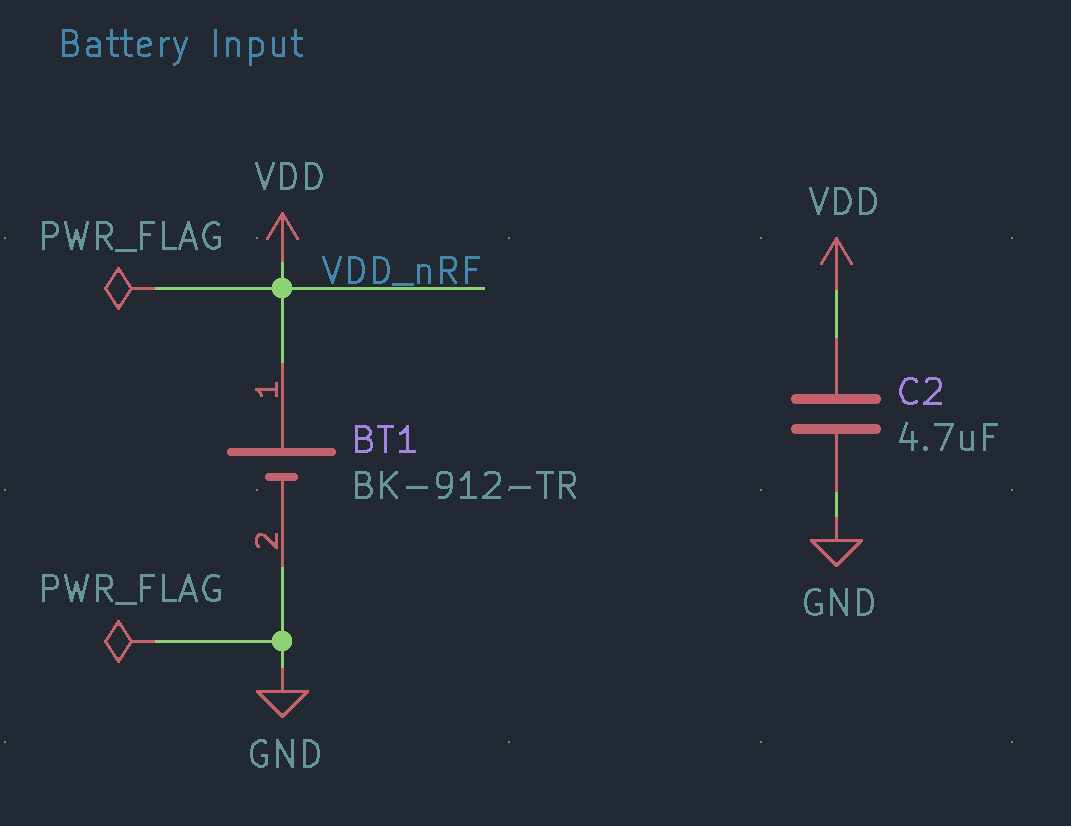I have a footprint which provides VDD in two places on the board.
Specifically, it's a CR2032 battery retainer:
I then bring that VDD to the top with vias and I have a big pouring of that VDD.
However, that pouring is broken in 2. The left is not connected to the right.
If feel it's even better in some way because there is no VDD "loop" on my board, but it makes KiCad complain that it's somehow unconnected (you can see the little line between one of the VDD vias and the VDD pad of the decoupling capacitor in the middle of the image).
Shouldn't KiCad know that it is connected through the footprint, as both pads have the same ID?
I feel like ignoring this error, is this a good idea?




